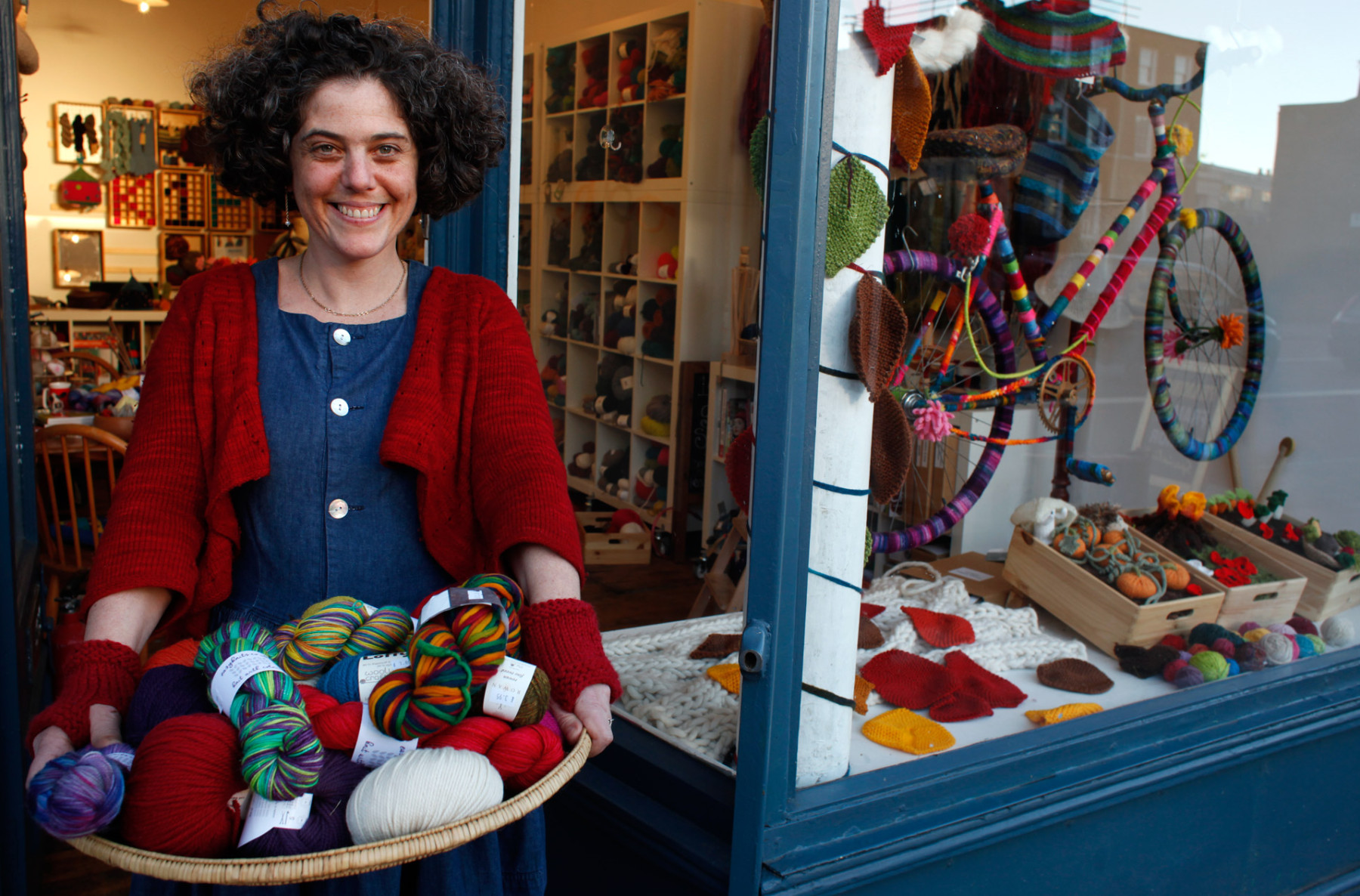It was quite early in Wendy Peterson’s young life as a knitter that she noticed her right leaning decreases were neater than her left leaning ones. It bothered her. It looked wrong and she wanted it to look right.
This was long before knitting on the internet, before the time of hacks and FAQs. There were no online hive minds or videos to show you how.
Instead, Wendy used what she already knew about knitting and began puzzling it out. She followed the yarn along the stitches to see how they formed, and saw how each stitch pulled the one immediately behind it into shape. And that explained how the stitch that sits on top in your left-leaning decrease has the decreased stitch underneath it, which is directly in the way of letting the ‘next stitch’ pull it snugly into shape. With the problem clarified, she then set about knitting out all sorts of different decreases to find a better one – which she finally did – brilliantly.
To this day, I smile inwardly each time I have a pattern that asks me to work an SSK (left leaning decrease), reassured in the knowledge that I am armed with Wendy’s superior K2tog-L – the neater left leaning decrease which gets the stitch on top snug before moving onto the next stitch.
There is a remakable no-stone-unturned method to the way that Wendy seeks out solutions. Never-Knowingly-Underswatched is how she jokingly put it when she once arrived in the shop with a pile of swatches which painstakingly showed her route from flawed stitches to flawless fixes.
“I want to understand not just my gauge. I want to understand the wool, the stitch pattern, to have some confidence in how it works and to relate that to the bigger garment… Different short rows are differently suitable for different yarns and stitch patterns like garter stitch and stocking stitch. I have to swatch first to work that out”
At the same time, her insatiable appetite for working it out, means that regardless of solutions and discoveries, her journey’s destination is never quite reached, as it always reveals unchartered terrain in an unfolding landscape of knitting puzzles.
Wendy is quite philosophical about that. “I’m at peace with the idea that I’m interested in a million life times’ worth of things to learn and that I’m going to have choose which I learn in this one.”
This self knowledge means Wendy excudes a beguiling mix of calm and utterly over-stimulating genius, which is nowhere plainer than in her relentless mission to master an elaborated version of intarsia called shaped intarsia. Intarsia is the method of colourwork knitting which creates distinct fields of colour. Unlike fairisle which relies on stranding the wool at the back to to create repeating motifs, intarsia allows you to make designs with separate areas of colour as each has its own ball of wool. The challenge for intarsia picture knits, is giving these areas of colour, curved or diagonal edges within a fabric framework which is essentially a grid of knitted stitches. It achieves this by cheating the eye into overlooking the pixelated edge of each area of colour, so that we see a curve and not the jagged line. But that jagged line bothered Wendy. So she decided it would be interesting to see if she could defy the knitted grid and properly ‘shape’ the edge of each field of colour.
She knew how to shape knitted fabric – she’d knitted a pile of heart shapes to sew into a blanket for her sister-in-law’s new baby. Irritatingly, the hearts wouldn’t properly tessalate so sewing them together was tricky.
“I’d made hearts with increases on this side and decreases on that side. And I wondered if I could make an intarsia heart on a square instead – using the same increases and decreases along each side of the motif. The first time I tried it, it was just incredible. There was lots I needed to work on, but it was clear it had worked.’
The diagonals of the heart were smooth, not pixelated.
“The curves at the top were the tricky bit – getting a smooth shape on vertical stitches whilst keeping the fabric whole and cohesive needed me to cast off those stitches without bringing them into the colour above.”
It’s 10 years since she made her first shaped intarsia heart, and amongst many other things, her repertoire now includes climbing vines of intricately shaped leaves, spiralling discs that appear to spin down a sweater and a Bowie-esqe flash that bisects a beanie, all with perfectly smooth curved, horizontal, diagonal and vertical edges. She’s also on the way to developing a methodology and curriculum to enable the technique to be used by others.
We all have different ways of mastering our craft: googling video solutions, consulting reference books, popping into the woolshop ;o), asking your cousin, neighbour or nan. We find our own ways of mining the knitting world of knowledge to fish out what we need to know and share it on when asked. But few of us have the drive to really figure things out and grow that world like Wendy does – All of which leaves me thinking on pretty much of a daily basis – Thank goodness for Wendy!
Wendy Peterson is the developer and maintainer of yarnsub.com. She also teaches intarsia and continental knitting classes regularly in the shop. You can listen to her explain the K2tog-L story in Episode 1 of the Knit 15 podcast.

